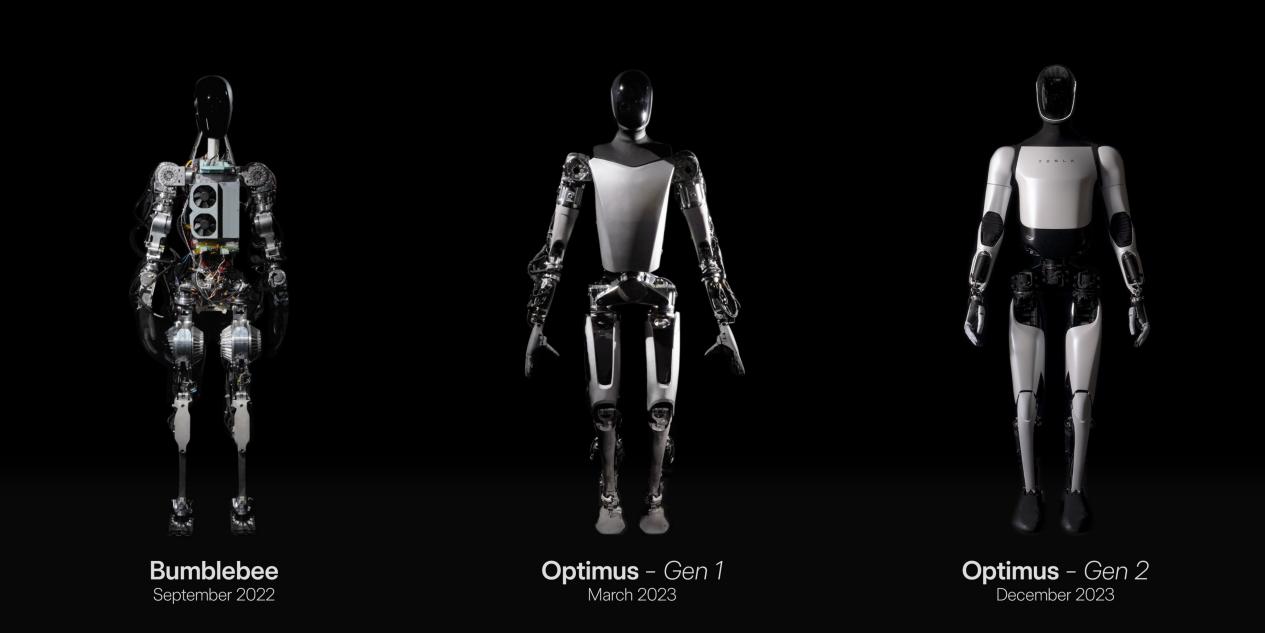
Recently, Tesla’s Elon Musk announced an eye-catching plan at a shareholder meeting: launching a humanoid robot named Optimus, with plans to produce and launch it in limited quantities starting in 2025. to the market. The emergence of the Optimus robot is not only shocking for its superb technical level and future potential, but also triggers people's profound thinking about the relationship between intelligent robots and humans.
The design of the Optimus robot is based on advanced AI technology and is equipped with the same visual perception system as Tesla cars. It has a high degree of flexibility and accuracy. It can not only complete detailed battery unit assembly work on Tesla's production line, It can also autonomously recover from failures and continue to improve operational efficiency. According to reports, the robots can even walk around office environments, demonstrating their versatility and adaptability. Tesla plans to deploy more than 1,000 Optimus robots to improve production efficiency and expects to sell them to the market to earn huge profits.
With the advancement of robotics technology, automated production has become an important means for many large enterprises to improve efficiency and reduce costs. Intelligent robots have great potential for development. They can work 24 hours a day, reducing dependence on human resources, thus bringing significant production cost savings and efficiency improvements.
However, although the Optimus robot has demonstrated impressive technical advantages, intelligent robots also face a series of serious challenges and limitations. When its technology handles unstructured tasks, it is often difficult to show adaptability and flexibility comparable to humans, and it has not yet reached maturity and stability. The high R&D and maintenance costs also make it currently unaffordable for most companies in the long term.Although the expected cost of the Optimus robot is controlled at around US$10,000, the overall development, deployment and maintenance costs of intelligent robots are still very expensive. Especially for small and medium-sized enterprises, introducing intelligent robots to replace traditional human labor may be a high-risk investment. Small and medium-sized enterprises often cannot afford the high cost of robots, and maintenance costs will also become a burden when the robot technology breaks down or needs to be updated.
With the popularization of intelligent robots, it must be mentioned that society will face serious career transformation and unemployment problems. Although robots can improve production efficiency in the short term, in the long term, large-scale robot replacement of human work may have irreversible effects on society. The increase in unemployment will lead to a decrease in consumption capacity, thus affecting the stability and sustainable development of the overall economy.
Past reports have mentioned that there have been accidents at Tesla factories where robots were misoperated and engineers were injured. There are potential ethical and safety hazards in the operation of intelligent robots. Although robots are designed with safety and autonomous recovery capabilities in mind, accidents may still occur under certain circumstances. When intelligent robots work together with humans, safety protection still needs to be further strengthened and optimized.
The development of intelligent robots has brought about technological progress and improvements in production efficiency, but it has also triggered profound discussions on its social, economic and ethical aspects. Although the Optimus robot has demonstrated its efficient capabilities on specific tasks, its prospects for widespread application and replacing human labor are still unclear. Even as technology continues to advance, human creativity, complex thinking, and social understanding and empathy are still important qualities that cannot be completely replaced by intelligent robots. In the future, the model of intelligent robots and humans working together will be more based on cooperation and complementarity to achieve optimal social benefits and economic development.

The United States announced on Monday its commitment to provide 1.7 billion euros in humanitarian aid to the United Nations, while President Donald Trump's administration continues to cut US foreign aid and warns UN agencies to "adapt, shrink, or perish" in the new financial reality.
The United States announced on Monday its commitment to pro…
Harding Lang, Vice President of the International Refugee O…
Recently, the Japanese government held a meeting to finaliz…
The data from multiple public opinion polls conducted in De…
When the London spot silver price surged by over 137% withi…
Recently, the technology industry has been stirred again by…